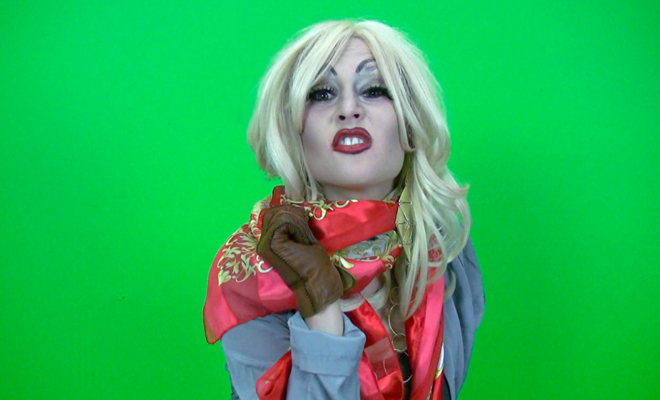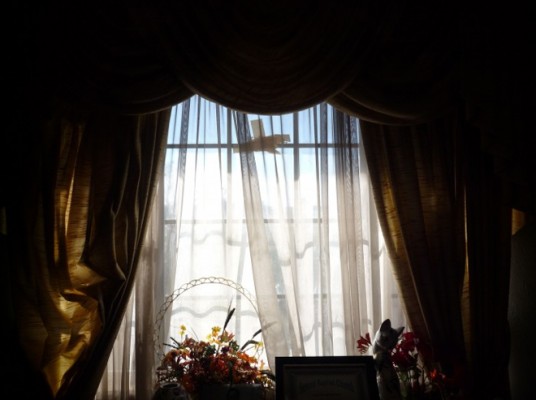Review: “Grant v. Lee”

Nina Schwanse, Civil Realness: Grant vs. Lee, 2011. Digital video (still). Courtesy the artist and Good Children Gallery, New Orleans.
“Grant v. Lee”
Good Children Gallery
4037 St. Claude Avenue
June 11–July 3, 2011
Every generation of artists struggles to find the appropriate response to war. The group exhibition “Grant v. Lee” features 17 artists working across media to contemplate the bloodiest war in American history. Curated by photographer Sophie T. Lvoff, the show pays homage to noted Civil War photographers Matthew Brady and Timothy O’Sullivan. Unlike Brady and O’Sullivan, who marched into battle and brought the realities of war into civilian homes, the photographers in “Grant v. Lee” take the focus away from the front lines, exploiting their historical distance to place the emotions of the War Between the States into contemporary context. Paul Mpagi Sepuya, for example, illustrates the Southern home front. Alternating between individual interior and exterior shots in his Louisiana Windows, 2010, Sepuya creates a sense of emptiness and longing: the viewer can imagine a worried mother (past or present) looking out these windows waiting for her young soldier to come home.
Nina Schwanse’s video Civil Realness: Grant vs. Lee, 2011, attempts to engage the viewer with a humorous interpretation of a rematch between Ulysses S. Grant and Robert E. Lee. Covered in drag makeup that defies their chronicled masculine personas, Schwanse’s generals “duel” through flirtatious trash-talking followed by hand-holding, with Grant eventually lip-syncing Mariah Carey’s “We Belong Together.” Unfortunately, when compared with the artist’s own Death Masks (Grant v. Lee), 2011—chilling grisaille paintings also on view—the garish video fails to elicit more than a chuckle. When it comes to levity, Rachel Jones’ colored pencil portraits are more effective. Her brightly hued renditions of Grant, Lee, and other soldiers juxtapose the war heroes’ austerity with playfully delicate outlines and ornamental frames, some with naïve heart details. The portraits possess a level of formal sophistication while remaining pleasantly simplistic, reminiscent of the childhood lessons that so often introduce us to war, coaxing otherwise painful and complicated histories into straightforward and gentle narratives.
James Taylor Bonds’ series of painted portraits features the mangled and distorted faces of battle-weary young men, beaten yet expressionless. In his The Woeful Victory At The Battle for Flintock-Close, 2011, the cast of characters feels almost allegorical: a mustachioed man stands tall with a sword in hand, a young man holds a missile overhead, a nude woman lies splayed on the ground. Regardless of who won the battle, the figures in Bonds’ painting seem to be asking: “How did we get here?” With this collection of work, Lvoff proves that you don’t necessarily need to show bloodshed to visualize the destruction, disillusionment, and loss of innocence that accompany war in any era.

Paul Mpagi Sepuya, Untitled from Louisiana Windows, 2010. Variable installation of 18 framed c-prints with shelving. Courtesy the artist and Good Children Gallery, New Orleans.



